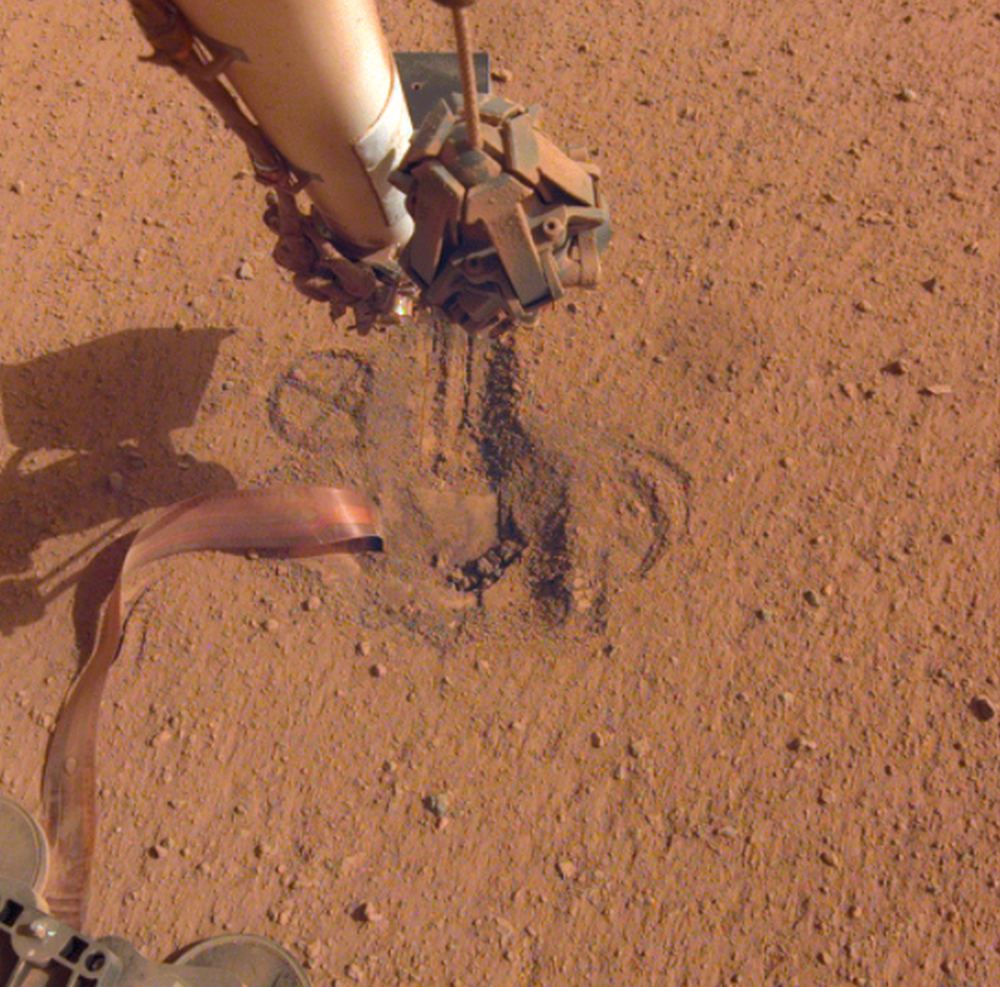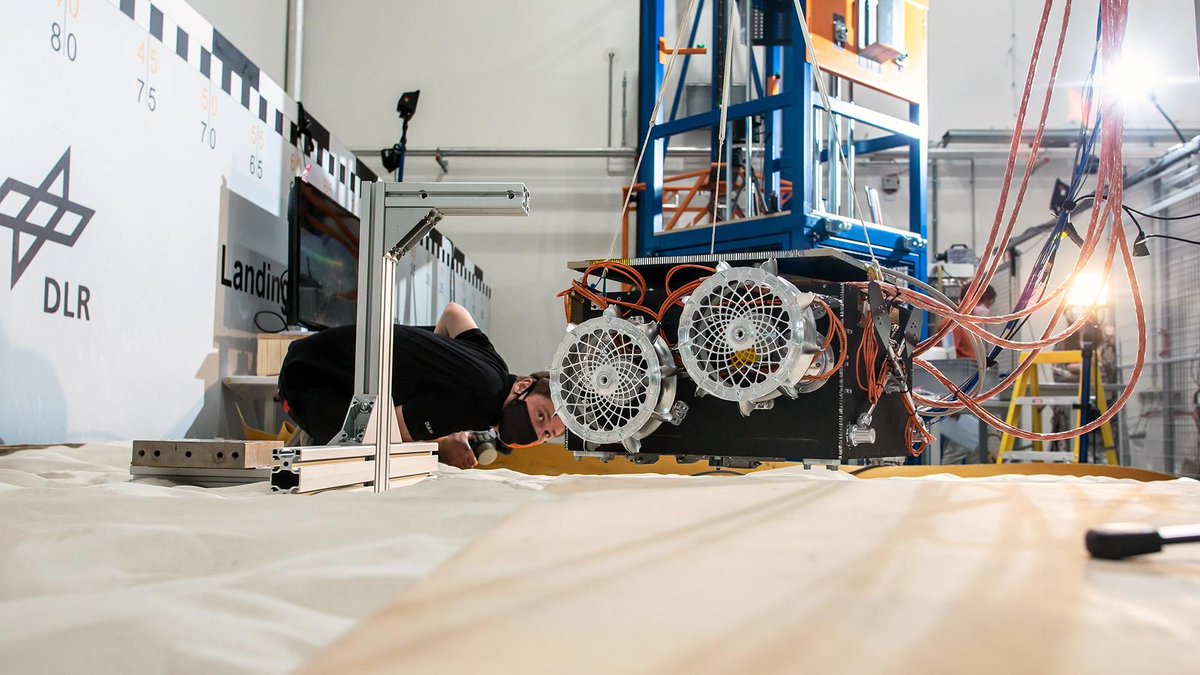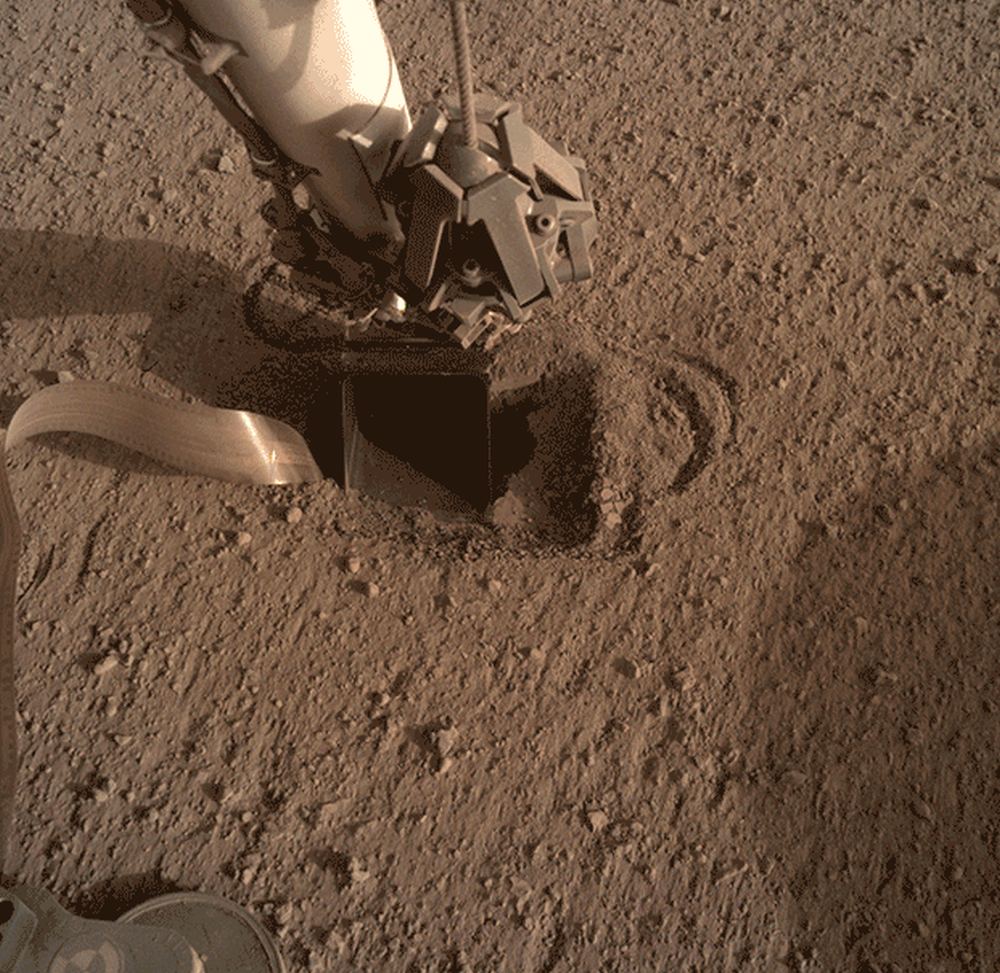Continuous human habitation of the Moon is the state aim of many major space-faring nations in the coming decades. Reaching that aim requires many tasks, but one of the most fundamental is feeding those humans. Shipping food consistently from Earth will likely be prohibitively expensive shortly, so DLR, Germany’s space agency, is working on an alternative. This semi-autonomous greenhouse can be used to at least partially feed the astronauts in residence on the Moon. To support that goal, a team of researchers from DLR released a paper about EVE, a robotic arm intended to help automate the operations of the first lunar greenhouse, at the IEEE Aerospace conference in March.
Continue reading “Can a Greenhouse with a Robotic Arm Feed the Next Lunar Astronauts?”An Astronaut Controls a Robotic Dog From Orbit
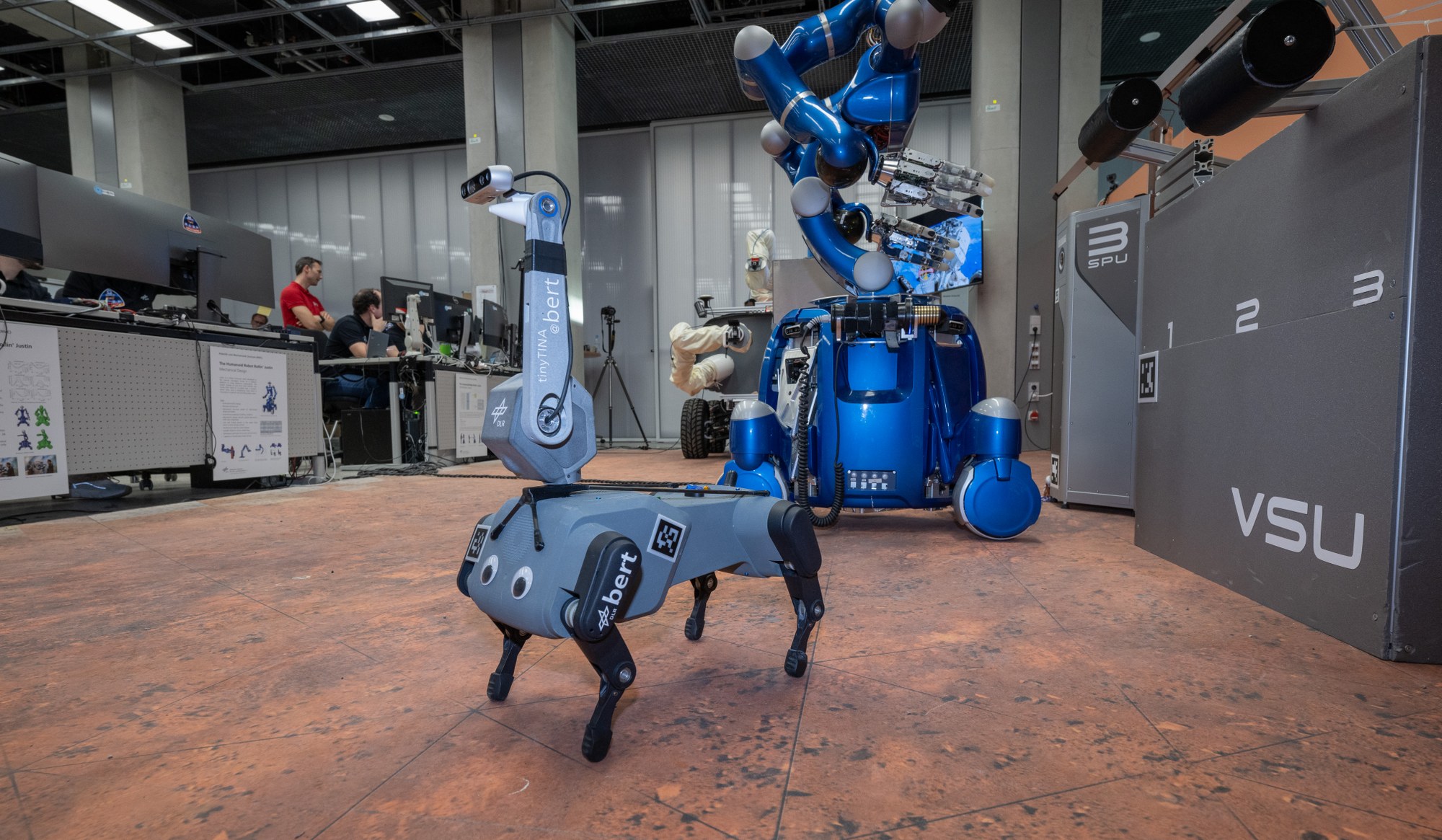
Swedish astronaut Marcus Wandt took control of a series of robots in Germany while on board the International Space Station, zipping around the Earth at 28,000 kilometers per hour (17,500 mph.) Researchers want to understand how time delays can affect the remote control of robots from an orbiting platform. Future astronauts could control rovers on the Moon’s or Mars’s surface from a spacecraft in orbit. Until now, only wheeled rovers have been part of the tests, but now they have added a dog-like robot called Bert.
Continue reading “An Astronaut Controls a Robotic Dog From Orbit”Germany is Building a Tiny Rover That Will Roam the Surface of Phobos
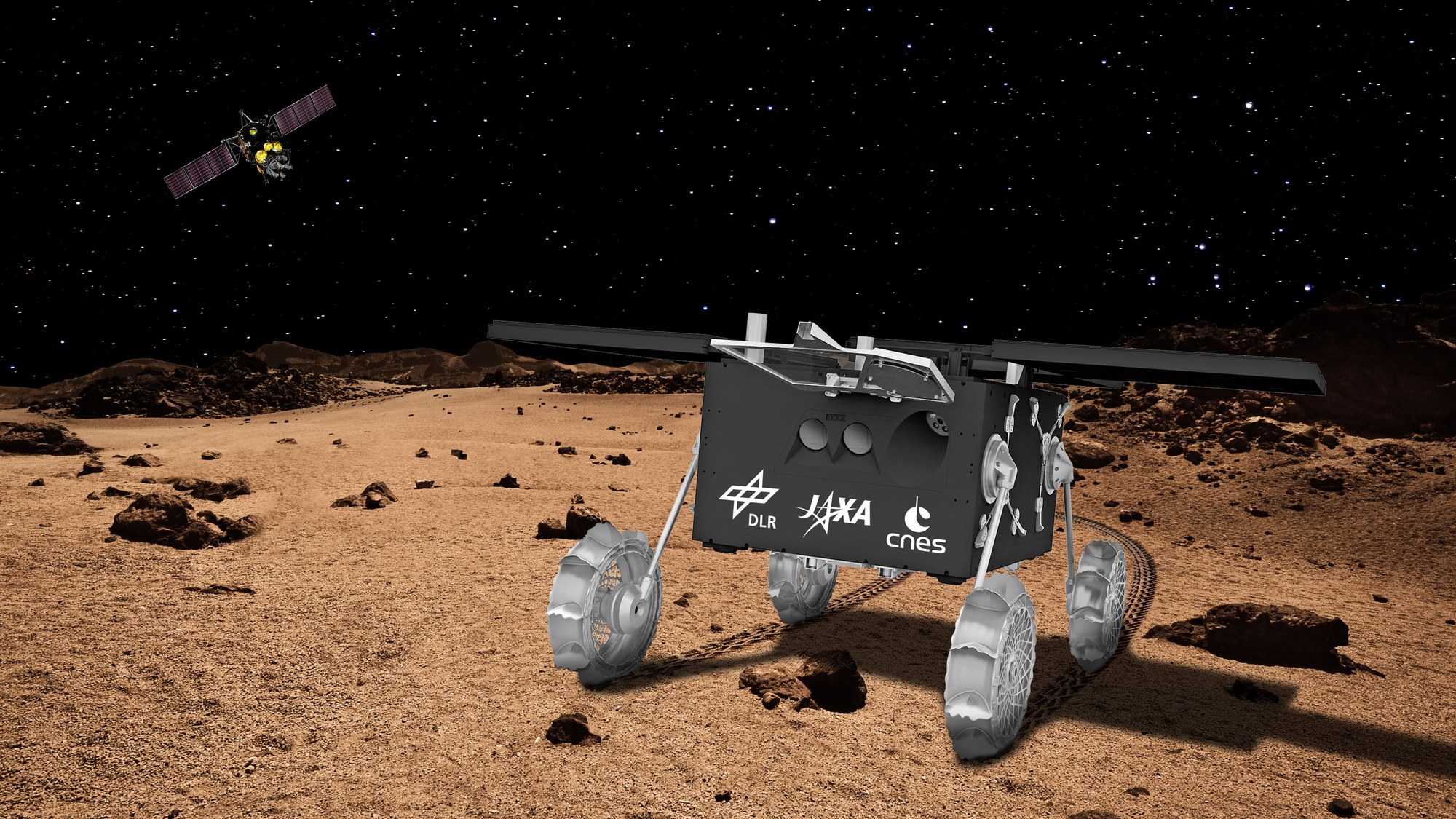
At this very moment, eleven robotic missions are operating in orbit or on the surface of Mars, more than at any point during the past sixty years. These include the many orbiters surveying the Red Planet from orbit, the handful of landers and rovers, and one helicopter (Ingenuity) studying the surface. In the coming years, many more are expected, reflecting the growing number of nations participating in the exploration process. Once there, they will join in the ongoing search for clues about the planet’s formation, evolution, and possible evidence that life once existed there.
However, there’s also the mystery concerning the origin of Phobos and Deimos, Mars’ two satellites. While scientists have long suspected that these two moons began as asteroids kicked from the Main Belt that were captured by Mars’ gravity, there is no scientific consensus on this point. This is the purpose of the Martian Moons eXploration (MMX) mission currently under development by the Japan Aerospace Exploration Agency (JAXA), which will explore both moons with the help of a Phobos rover provided by the German Aerospace Center (DLR) and the French National Center of Space Studies (CNES).
Continue reading “Germany is Building a Tiny Rover That Will Roam the Surface of Phobos”JAXA’s Ambitious Mission to Phobos Will Even Have European-Built Rover
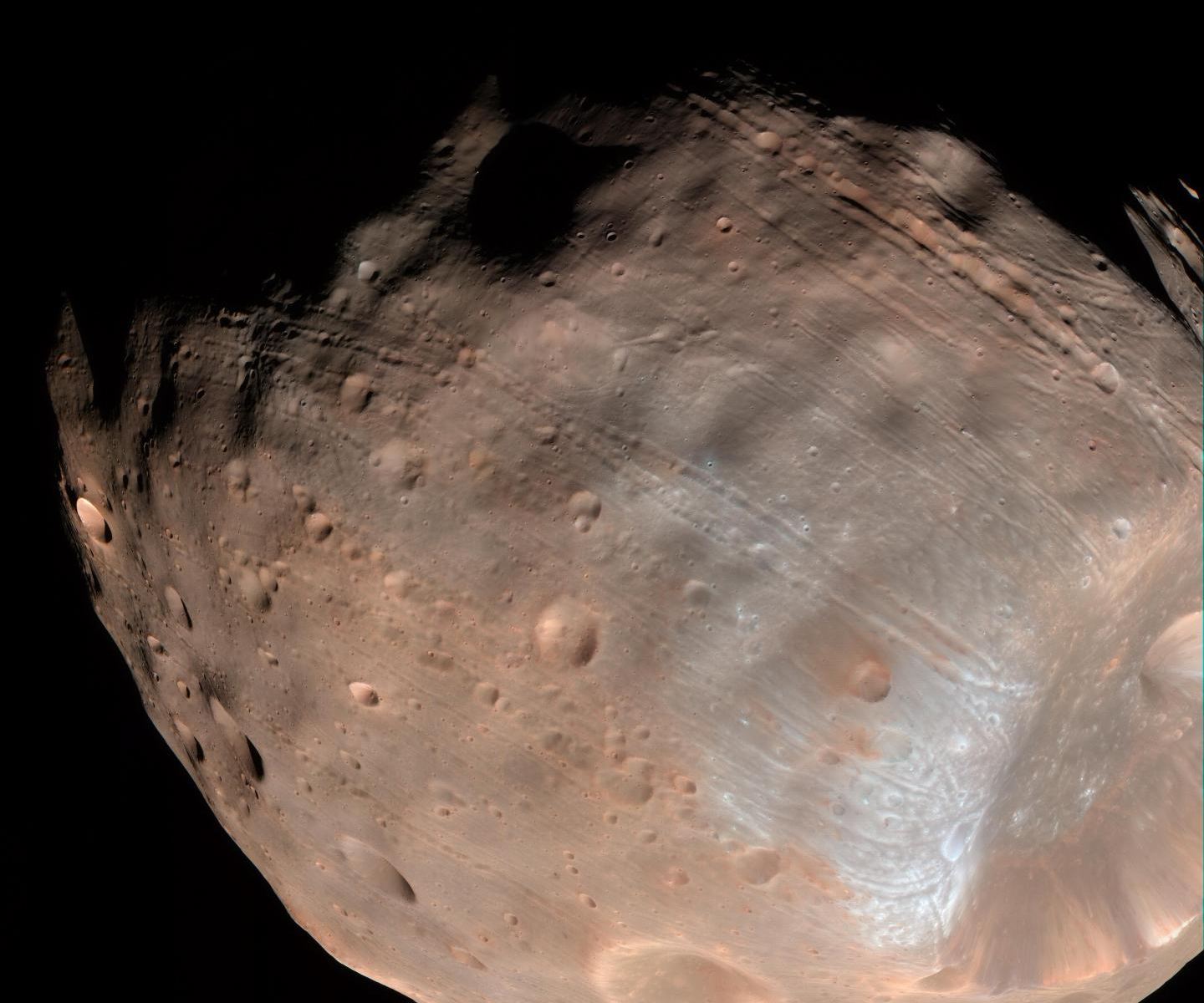
Japan and Germany have a history of collaboration in scientific and technological endeavours. The countries have a Joint Committee on Cooperation in Science Technology that has met many times over the decades. Both countries have advanced, powerful economies and sophisticated technological know-how, so it makes sense they’d collaborate on scientific activities.
This time, their cooperation concerns a small, potato-shaped chunk of rock: Mars’ moon Phobos.
Continue reading “JAXA’s Ambitious Mission to Phobos Will Even Have European-Built Rover”Germany’s Space Agency Cancels all its Projects With Russia. They Even Turned off an Instrument on a Russian Space Telescope
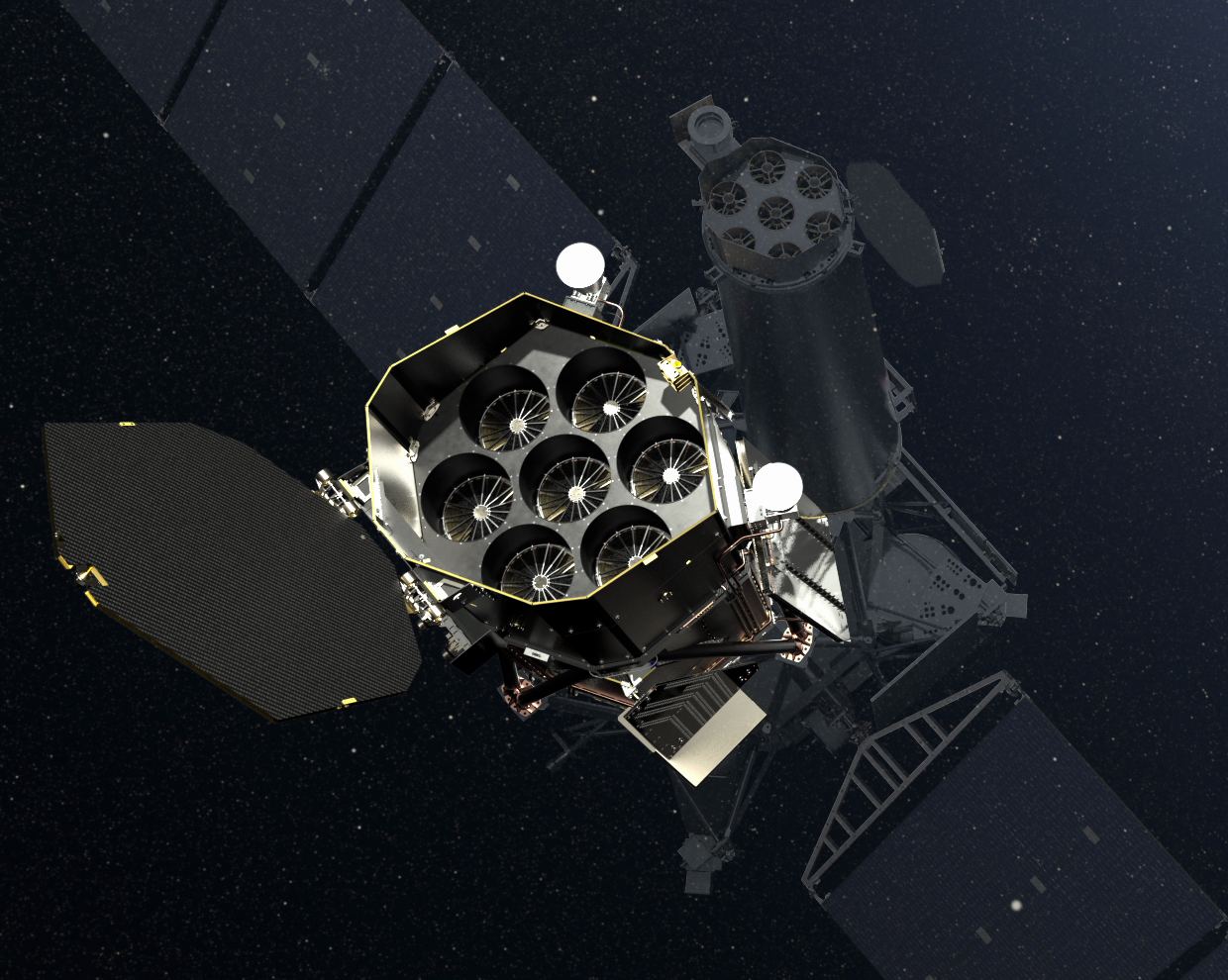
Germany is flexing its muscles.
The German government recently announced a massive increase in military spending to counter Russian military action in Europe. The German Aerospace Center (DLR) has cancelled its bilateral cooperation with Russia following that move. It looks like the Spektr-RG space telescope, a joint mission between Russia and Germany, is the first casualty of the cancelled partnership.
Continue reading “Germany’s Space Agency Cancels all its Projects With Russia. They Even Turned off an Instrument on a Russian Space Telescope”InSight’s ‘Mole’ is Now Completely buried!
It’s been a long road for InSight’s Mole. InSight landed on Mars almost two years ago, in November 2018. While the lander’s other instruments are working fine and returning scientific data, the Mole has been struggling to hammer its way into the surface of the planet.
After much hard work and a lot of patience, the Mole has finally succeeded in burying itself all the way into the Marian regolith.
But the drama hasn’t concluded yet.
Continue reading “InSight’s ‘Mole’ is Now Completely buried!”Testing the Rover That’ll Land on Phobos
Rovers seem to be proliferating all over Mars. There are currently 4 on the surface, and another (Perseverance) will be arriving in a few months after a successful launch at the end of July. Mars itself isn’t the only interesting rocky body in the Martian system, however. Its two moons, Phobos and Deimos, pose a bit of a mystery. How were they formed? Were they captured asteroids or caused by an impact similar to Earth’s own Moon?
Scientists and engineers are now one step closer to answering those questions with the successful test of a rover that will visit Phobos with JAXA’s Martian Moon Exploration (MMX) mission that will launch in 2024. The rover, which has yet to be separately named from its parent mission, just underwent some testing that will help to prove it’s worthy to join the pantheon of rovers roaming around the Martian system.
Continue reading “Testing the Rover That’ll Land on Phobos”InSight’s Mole Is In!
The InSight lander is making progress on Mars. After many months of struggle and careful adaptation, the InSight lander’s ‘Mole’ is finally into the ground. There’s still more delicate work to be done, and they’re not at operating depth yet. But after such a long, arduous affair, this feels like a victory.
Continue reading “InSight’s Mole Is In!”Although InSight’s Mole is Completely Buried, it Might be Stuck Again
You’ve gotta hand it to NASA, and to the German Aerospace Center (DLR.) They’ve been struggling for over a year to get the InSight Lander’s Mole working. There’ve been setbacks, then progress, then more setbacks, as they try to get the Mole deep enough to do its job.
Now the Mole is finally buried completely in the Martian surface, but it might still be stuck.
Continue reading “Although InSight’s Mole is Completely Buried, it Might be Stuck Again”Finally! Mars InSight’s Mole is Now Underground
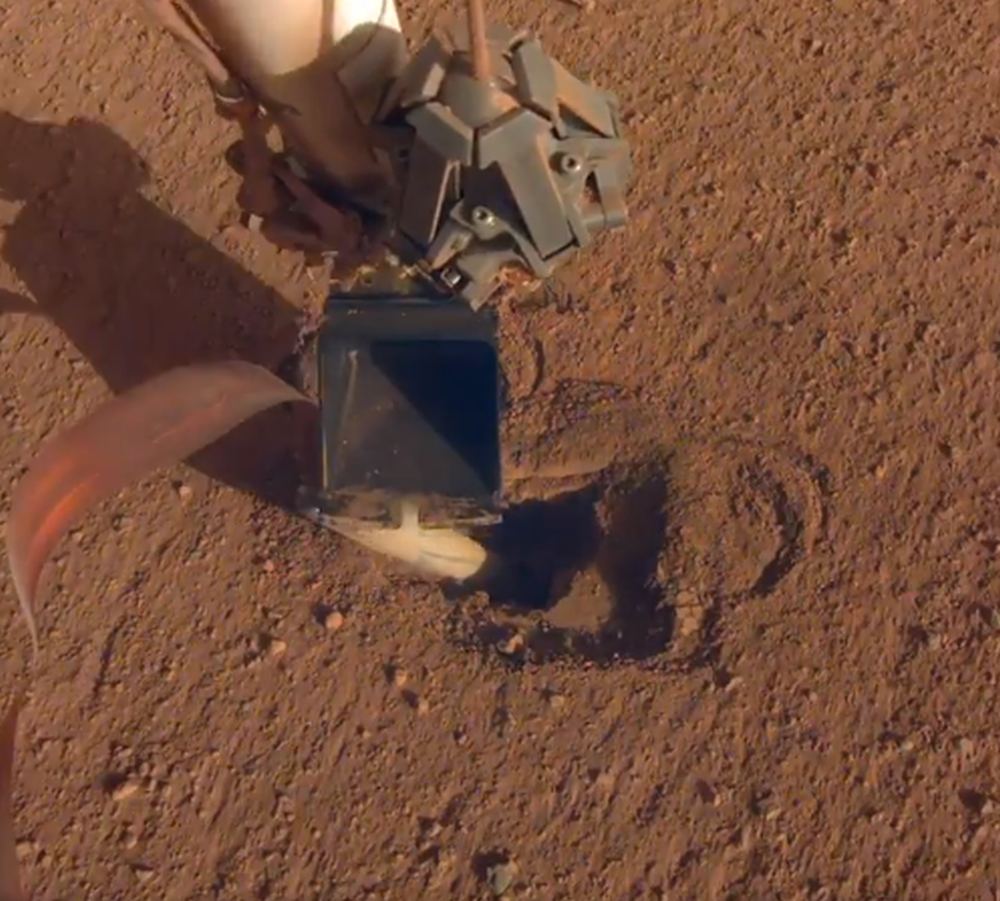
It looks like the InSight Lander’s Mole instrument is making some progress. After months of perseverance, the team operating the instrument has succeeded in getting the Mole at least some distance into the ground.
That’s a victory in itself, considering all the setbacks there’ve been. But it’s too soon to celebrate: there’s quite a ways to go before the Mole can deliver any science.
Continue reading “Finally! Mars InSight’s Mole is Now Underground”

